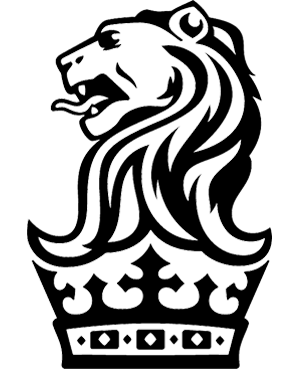Tags
#Onboarding
Train employees to provide fearless feedback to each other
In the Apple Store training manual, employees are given this example as a way to provide fearless feedback to their colleagues:
- "Hi, fellow Genius. I overheard your conversation with your customer during the last interaction and I have some feedback if you have a moment. Is this a good time?"
- "Yes, this is a good time."
- "You did a great job resolving the customer's iPhone issue. I was concerned with how quickly you spoke to the customer. It seemed like you were rushing through the interaction, and the customer had additional questions."
Do not rush training
Apple Geniuses first go through an intensive two-week training program that includes role-playing exercises at a mock Apple Store and an array of certifications. This is followed by several weeks of shadowing seasoned employees around an Apple Store, where they are only allowed to observe and never interact with customers. This is all to make sure that employees have been fully indoctrinated into the principles outlined in the over 80-page Genius Training Student Workbook, which focuses primarily on empathizing with, consoling, and cheering up customers.
Increase anticipation with vigilant secrecy
The cost of information being released early about an upcoming innovative product is too risky for Apple. It dampens the anticipation, gives competition time to respond, allows openings for critics to criticize the idea rather than the actual product, and finally steals the thunder from the existing product line.
So it's not surprising that the penalty for revealing any Apple secret, intentionally or unintentionally, is immediate termination and lawsuits. But Apple doesn't stop there.
- Employees must sign agreements stating that they will not even tell their spouses or kids about the projects they are working on.
- Visiting guests are not to be left unattended even in the cafeteria and are asked to not share or post any details about their current location.
- Teams are purposely kept apart and don't know what the other one is working on. On launch day, they have no idea what other features in the same product will be announced simultaneously.
- New employees don't know what their exact roles are until after onboarding.
- Organization charts don't exist. They are considered information that employees don't need and outsiders shouldn't have.
- Plainclothes Apple security agents are believed to hang out at nearby bars to see if employees are staying quiet.
Make your welcome letter inspirational
In just a few short sentences, Apple's welcome letter lets new employees know that the work they will do is special. Their future at Apple is not about a title, a paycheck, or a daily routine but instead about unleashing their passion, creativity, and fearlessness.
Apple's welcome letter
There’s work and there’s your life’s work.
The kind of work that has your fingerprints all over it. The kind of work that you’d never compromise on. That you’d sacrifice a weekend for. You can do that kind of work at Apple. People don’t come here to play it safe. They come here to swim in the deep end.
They want their work to add up to something.
Something big. Something that couldn’t happen anywhere else.
Welcome to Apple.
Create opportunities for new employees to connect with people outside of their department
On their first day at Apple, employees don't have anyone there to help them connect their computer to the network. While this forces new recruits to make connections across the organization in order to solve the problem, it is also Apple's (not-so) subtle way of saying: If you're smart enough to work here, you should be smart enough to figure this out yourself.
Now this doesn't mean new employees are completely on their own. Apple designates an iBuddy from outside the new recruit's department to help her get around the building and campus. They usually meet up only once or twice before things get too busy.
Send a reminder to managers on how to onboard new hires effectively
On the Sunday before a new hire starts, managers at Google receive a just-in-time email outlining the five most important steps to take with their Nooglers:
- Have a role-and-responsibilities discussion that answers these questions:
- What are the goals and measurable results that your Noogler will need to achieve in their first quarter?
- How does your Noogler's role connect with Google's business goals? The team's goals?
- When will your Noogler's first performance management conversation be, and how will their rating be determined?
- Match your Noogler with a peer buddy.
- Help your Noogler build a social network.
- Set up onboarding check-ins once a month for your Noogler's first six months.
- Encourage open dialogue.
The email is specifically sent at this time and kept short and simple, so that it is easier to remember and is more likely to be executed on correctly. Managers who did take action on these five steps had their new hire become fully effective 25% faster than their peers.
Make orientation about your purpose and your people
The Ritz-Carlton's two day orientation always begins with top executives personally greeting each new hire. It lets new employees know that the company prioritizes people over paperwork, processes, and rules. Even as they are served lunch, new hires are surprised with favorite snacks that they had mentioned during their interview process.
As Day One begins, it is also a tradition for the President and COO to lead its discussions. Former President Horst Schulze always liked to stress the importance of every person there with these opening remarks:
"Good morning. My name is Horst Schulze. I am president and COO of this organization, and I am very important around here. But so are you! No human being should claim to be superior to the next human being. You are equally as important to this company as I am. Why is that? Because you are going to make a critical contribution here. If I don't show up for work until tomorrow afternoon, few people will notice! But if one of you in housekeeping doesn't show up, the beds won't get made. We won't be able to check in new guests for tomorrow night. The financial hit will be immediate. We will have a disaster on our hands!"
The rest of the orientation is filled with interactive discussions about:
- The company's history, purpose, and Gold Standards
- What it means to be the top 1% of an industry
- The importance of the customer
- What drives the customer experience
- The importance of financial soundness
Managers go through an additional day of orientation where they discuss the importance of respecting their staff, how to facilitate ongoing career discussions, and how to be a mentor.
Select, don't hire
At The Ritz-Carlton, your choice of words matter. Telling people they were "selected as the best candidate for a career" versus just "hired for a job," creates two completely different mindsets. For The Ritz-Carlton, when candidates feel they have been selected it instills a sense of pride and excitement from the start.
Provide new hires with a learning coach
For the first three weeks of the job, all new hires are teamed up with learning coaches to help train and certify them on their job's core competencies. The coaches are neither the employee's manager or supervisor but share the same title as the new hire. They are, however, high performers who are aspiring to take on a leadership position and have shown themselves to embody the Gold Standards.
Learning coaches are also assigned to employees who have been experiencing problems meeting the Gold Standards and require, what The Ritz-Carlton calls, just-in-time learning.
Follow-up and listen to your new hires on Day 21
After their first three weeks on the job, The Ritz-Carlton holds a six-hour forum for new hires called Day 21. For The Ritz-Carlton this is a pivotal time to: fill in any gaps not covered in training; review the Gold Standards; and identify and resolve any problems that may cause employees to disengage or become toxic to the culture.
By providing a safe space for staff to speak openly, new hires discuss their experiences and provide comments on:
- If they have all the tools they need to achieve success
- The quality of their training coach
- The camaraderie between departments and how it can be improved
- Their preparedness for their role
- The company culture and if what was described during orientation is present in their day-to-day experiences
All information is collected (with specific comments being kept anonymous) and provided to the guidance team at the hotel to take immediate action on. Leadership follows up directly with all new hires to let them know how their issues were resolved.
Re-certify and celebrate your new hires on Day 365
The Ritz-Carlton created Day 365, as a way to revitalize their staff's commitment and passion for the company. A full day event, employees are first re-certified in their roles with a written test, interview, and role-play session (which is all cake walk after over 250 hours of training in the year).
Once re-certified, employees are presented with service pins—a distinguished symbol of being part of The Ritz-Carlton family. They are also treated to a lunch banquet that is attended by everyone who is celebrating a service anniversary that month. The rest of the day is spent sharing stories and reflecting on the time they have had with the company so far.
Increase empathy by putting yourself in another employee's shoes
Southwest builds empathy among staff and accelerates their development by finding ways for employees to understand the job roles of other staff through shared experiences:
- The Cutting Edge Program: Throughout the year, Southwest pilots will work side-by-side with Ramp Agents to learn first hand about what goes on underneath the plane when it's at the gate. Pilots help with unloading bags, dumping lavatories, and fueling the jets.
- Customer Relationship Training: New Customer Relations Representatives go through four weeks of training which includes firsthand experience in all things customer service, like selling tickets, issuing boarding passes, and tagging bags. They also shadow senior Representatives as they take calls and work on the computer for a week before they even can answer a call themselves.
- Walk a Mile in My Shoes: For six months one year, employees and leaders were asked (not required) to come in on their day off and visit a different department or other station and spend six hours "walking in the shoes" of another employee. Over a 6-month period, 75% of employees participated. Read the experience of one Ramp Supervisor.
- A Day in the Field: This experience is practiced all year long, and is specifically for Officers and Directors to spend several hours and sometimes days working alongside staff to better understand their roles and to say that they can truly "walk the talk."
Set clear standards for service excellence
On their first day, each Starbucks partner (employee) is given a little 'Green Apron' book that fits neatly into their apron pocket. The book outlines the Five Ways of Being. which is the framework that the Starbucks Experience is built upon.
- Be Welcoming: Offer everyone a sense of belonging.
It's not just about writing a person's name on a cup. It's about taking the time to know their name, needs, and preferences when they walk in the door. As a study aid, some partners even keep spreadsheets containing customer preferences. - Be Genuine: Connect, discover, respond.
Connect with customers, so they know they are not just a "wallet with a human attached." If they are visibly having a bad day, try to make it better. Discover their wants and desires by asking questions that require more than a 'yes' or 'no' answer and listening to their response. You might just learn about needs that they didn't know they had. Finally, respond with respect and attention no matter who they are. - Be Considerate: Take care of yourself, each other, and the environment.
Don't just think of the now but be mindful of the future well-being of everyone and everything. It's not just about short-term gain but rather long-term survival and prosperity. - Be Knowledgeable: Love what you do. Share it with others.
"Sharing knowledge with customers makes for more sophisticated consumers." They in turn begin to understand, appreciate, and explore the subtle nuances of what you have to offer. - Be Involved: Connect with one another, with the company, and with your community.
Look around to see how to make things better, and then act on it. Partners have hosted open-mic nights, provided free-training to the unemployed, and even taken sign language lessons, so they can communicate with their customers.
Become the undisputed authority
To be a coffee authority at Starbucks requires extensive training through the 'Coffee Passport' program.
The program begins with each employee receiving a dense Coffee Passport Tasting Guide (PDF) that contains everything you ever need to know about coffee. After studying each Starbucks product in the book, partners join a group tasting. They are encouraged to write notes in their passport like "earthy and herbal" or "full-bodied and smooth." A completed entry earns them a stamp or a sticker in their passport.
Baristas have 90 days to complete the entire book and then have the option to become 'Coffee Masters' and don the coveted black apron. This can take an additional three months of training and requires baristas to ace content-based tests and lead multiple coffee tastings.
Use real-life scenarios when training
To reinforce the Starbucks Five Ways of Being (the guiding principles of the Starbucks Experience), Starbucks uses two types of training exercises to help their employees anticipate customer needs and to help build their confidence and team camaraderie.
'Conversations and Connections'
Each week, a lesson will focus on one particular Way of Being. Partners are given a customer comment card and must evaluate and discuss how the barista made a positive impact on the customer's experience.
Role playing
Both baristas and managers review customer comment cards and are then asked to reflect on the experience. They are asked to answer questions like:
- Name three behaviors that detracted from or enhanced the service.
- Which Green Apron Book behaviors could have made this situation a more positive experience for the customer?
- How would you act or coach the partner in this situation?
Create a culture that gives staff the freedom to have fun and be themselves
Former CEO, John Shields would famously tell new hires that "at the end of 30 days, if you are not having fun, please quit.”
To create a culture where employees actually have fun at their jobs while also genuinely caring about their customers, Trader Joe's first ensures that every employee has the opportunity to be themselves. Instead of trying to shape their crew into a specific corporate mold, they instead hire "outwardly nice" people and just let them loose.
On their first day, new crew members are only given three simple instructions, when it comes to customer service:
- Be yourself. Share stories about your life with customers. No topic is off the table, including politics and religion.
- Be genuine. Don't use scripts. Even when a crew member is asked how they are doing, they are encouraged to answer honestly, even on bad days.
- Be nice. Treat customers like you would a guest in your home, but treat your fellow crew members the same way.
Don't rush the onboarding process
Former CEO Ray Davis originally had The Ritz-Carlton lead Umpqua Bank's onboarding process. This highly intensive multi-week onboarding curriculum focused on educating new employees on the bank's history, service standards, policies, benefits, and retail culture.
As Umpqua Bank grew, they developed their own training facility, the World's Greatest Bank University. Expanding beyond orientation, Umpqua created personal growth and development classes like professional presentation appearance, communication skills, and time management.







